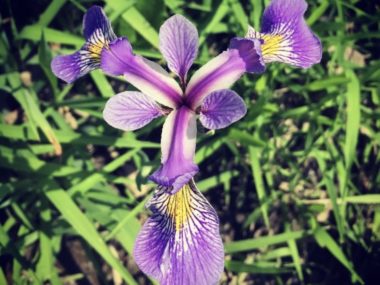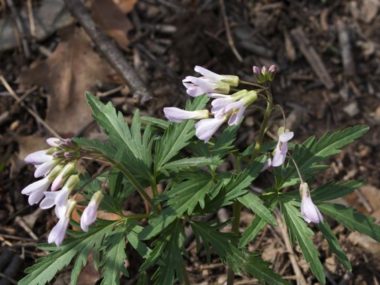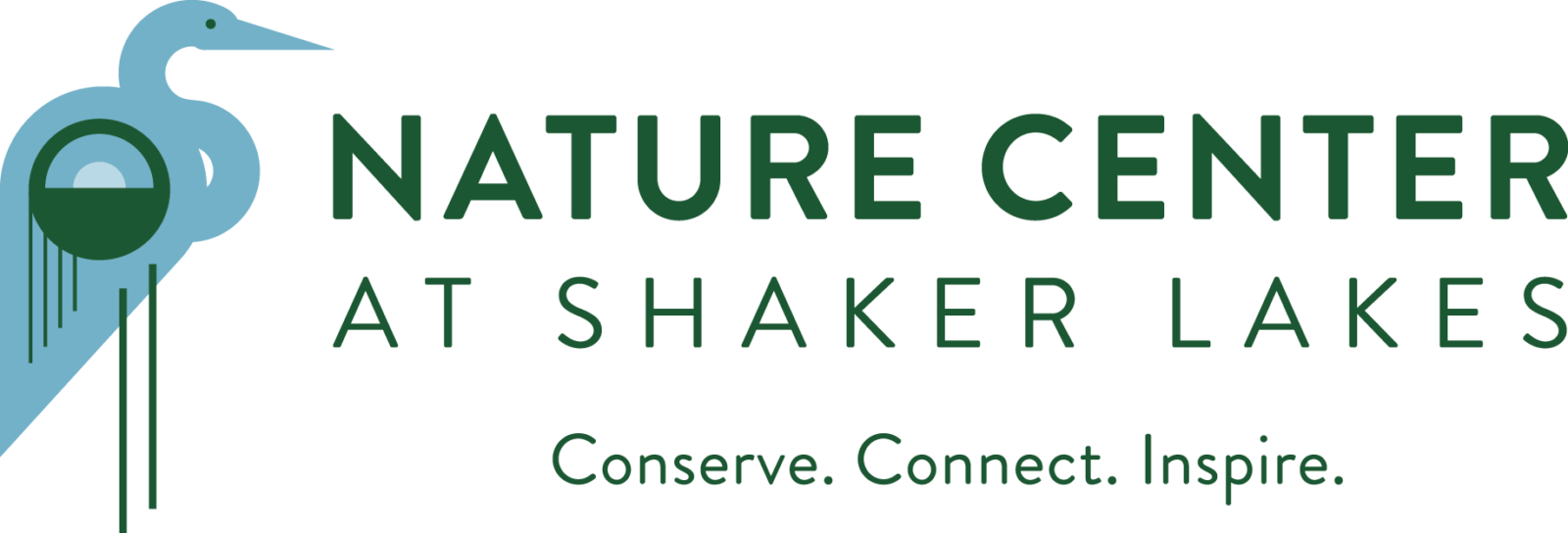Years ago, ninety-five percent of North East Ohio was made up of dense forest and dominated by shade-loving plants such as Jacob’s Ladder, Mayapple, Virginia Bluebells, Wild Ginger, and Wild Geranium. Over time, non-native, invasive plant species began to make their way into North East Ohio, pushing out the native species and changing the biodiversity of the area. Some, like garlic mustard were brought to the colonies by European settlers for both culinary and medicinal purposes. Each tiny garlic mustard flower produces hundreds of seeds and without any native predators in its new habitat, garlic mustard spread quickly through shady woodlands and yards, competing against spring ephemeral wildflowers for space, light, and moisture.
 While garlic mustard does bloom in small white floral clusters, the effects of this and other non-native invasive plant species is cascading. For example, the West Virginia white, a native butterfly, has been reduced through interaction with garlic mustard. If the butterfly lays its eggs on garlic mustard, rather than on a native mustard called cut-leaved toothwort (the only host plant for this butterfly), the eggs have a lower chance of hatching due to the chemicals in the garlic mustard, thus reducing the butterfly population.
While garlic mustard does bloom in small white floral clusters, the effects of this and other non-native invasive plant species is cascading. For example, the West Virginia white, a native butterfly, has been reduced through interaction with garlic mustard. If the butterfly lays its eggs on garlic mustard, rather than on a native mustard called cut-leaved toothwort (the only host plant for this butterfly), the eggs have a lower chance of hatching due to the chemicals in the garlic mustard, thus reducing the butterfly population.
Another invasive plant species that is proliferating in Northeast Ohio is yellow-flag iris. While it blooms a beautiful bright sunny flower each spring, its dense monotypic stands replace and crowd out valuable aquatic plants like broad-leaf cattails and other native irises near the edges of streams and ponds, in open and forested flood plains, along shorelines, and in freshwater and brackish marshes. The root system forms a dense mat which compacts soil and inhibits seed germination of other plants. Yellow flag iris was imported into North America as an ornamental plant in the late 1700s and has been deliberately propagated as a horticultural plant used for erosion control and in sewage treatment ponds. Each year, volunteer stewards help to pull yellow-flag iris from our marsh and replace them with native species, such as blue-flag iris.
Similar stories abound for non-native invasive species such as small-flowered hairy willow-herb, purple loosestrife, narrow-leaved cattail, deadly nightshade, lesser celandine, honeysuckle bush and privet. These can threaten the ecological health of our vibrant communities in the Heights and the larger area of Northeast Ohio.
 Today, due to the massive restoration efforts by the Nature Center at Shaker Lakes, a spring or summer hike through our trails will allow you to step back in time and experience the natural beauty and thriving bio-diversity of a preserved North East Ohio woodland forest and marsh. There are many sensory-stimulating and striking floral blooms that are ripe for discovery by children and adults alike beginning as early as mid-March and continuing through the end of summer. The habitats at the Nature Center are now home to a bio-diverse plant community that includes ferns, elberberry, broadleaf arrowhead, rice cutgrass, jewelweed, and blue flag iris. Greater bur-reed, swamp milkweed, swamp rose mallow, cardinal flower, turtlehead, arrowhead, goldenrods, buttonbush, hawthorn, skunk cabbage, sweet joe-pye weed, and tussock sedge also provide a colorful diversity that blankets the area and invites a natural and thriving balance of insects, birds, and other wildlife.
Today, due to the massive restoration efforts by the Nature Center at Shaker Lakes, a spring or summer hike through our trails will allow you to step back in time and experience the natural beauty and thriving bio-diversity of a preserved North East Ohio woodland forest and marsh. There are many sensory-stimulating and striking floral blooms that are ripe for discovery by children and adults alike beginning as early as mid-March and continuing through the end of summer. The habitats at the Nature Center are now home to a bio-diverse plant community that includes ferns, elberberry, broadleaf arrowhead, rice cutgrass, jewelweed, and blue flag iris. Greater bur-reed, swamp milkweed, swamp rose mallow, cardinal flower, turtlehead, arrowhead, goldenrods, buttonbush, hawthorn, skunk cabbage, sweet joe-pye weed, and tussock sedge also provide a colorful diversity that blankets the area and invites a natural and thriving balance of insects, birds, and other wildlife.

